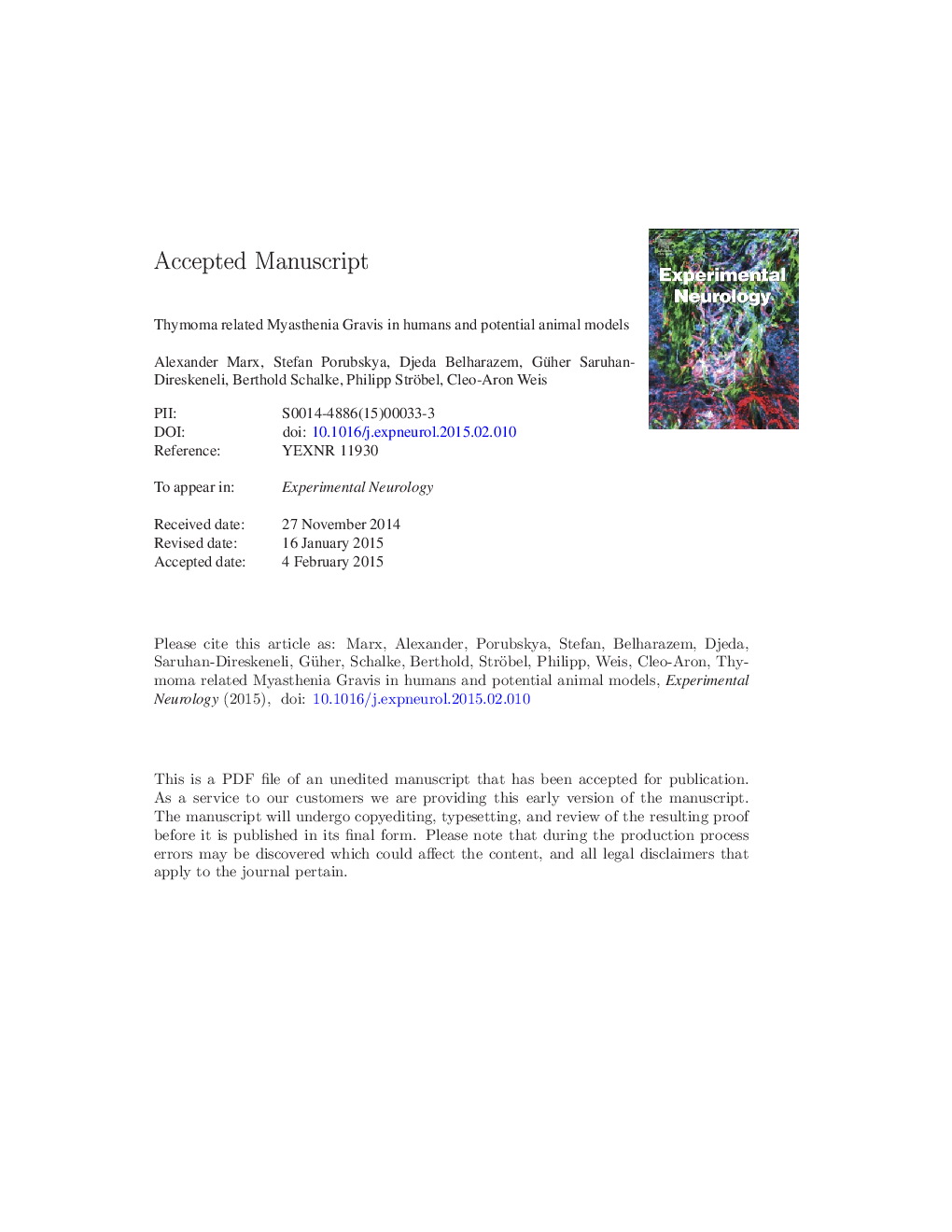| Article ID | Journal | Published Year | Pages | File Type |
|---|---|---|---|---|
| 6017413 | Experimental Neurology | 2015 | 37 Pages |
Abstract
Thymoma-associated Myasthenia gravis (TAMG) is one of the anti-acetylcholine receptor MG (AChR-MG) subtypes. The clinico-pathological features of TAMG and its pathogenesis are described here in comparison with pathogenetic models suggested for the more common non-thymoma AChR-MG subtypes, early onset MG and late onset MG. Emphasis is put on the role of abnormal intratumorous T cell selection and activation, lack of intratumorous myoid cells and regulatory T cells as well as deficient expression of the autoimmune regulator (AIRE) by neoplastic thymic epithelial cells. We review spontaneous and genetically engineered thymoma models in a spectrum of animals and the extensive clinical and immunological overlap between canine, feline and human TAMG. Finally, limitations and perspectives of the transplantation of human and murine thymoma tissue into nude mice, as potential models for TAMG, are addressed.
Keywords
NMJMuSKmTECAPECEDLRP4EOMGAChRLFHTECCATAcetylcholine receptor antibodyNeuromuscular junctionloss of heterozygosityHorseTigerautoimmune regulatorMuscle-specific tyrosine kinaseThymomaThymic epithelial cellsMedullary thymic epithelial cellsDogLOMGLOHAnimal modelRatMyasthenia gravisAIRELow-density lipoprotein receptor-related protein 4acetylcholine receptor
Related Topics
Life Sciences
Neuroscience
Neurology
Authors
Alexander Marx, Stefan Porubsky, Djeda Belharazem, Güher Saruhan-Direskeneli, Berthold Schalke, Philipp Ströbel, Cleo-Aron Weis,
